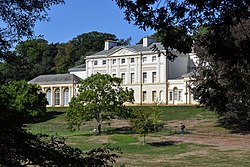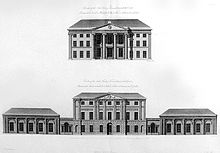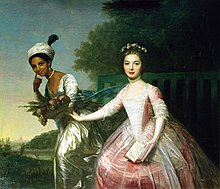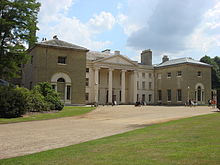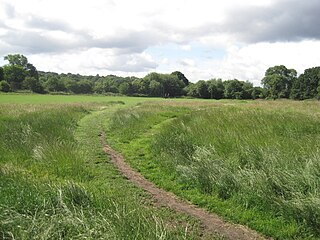
Hampstead Heath is an ancient heath in London, spanning 320 hectares. This grassy public space sits astride a sandy ridge, one of the highest points in London, running from Hampstead to Highgate, which rests on a band of London Clay. The heath is rambling and hilly, embracing ponds, recent and ancient woodlands, a lido, playgrounds, and a training track, and it adjoins the former stately home of Kenwood House and its estate. The south-east part of the heath is Parliament Hill, from which the view over London is protected by law.

Dulwich Picture Gallery is an art gallery in Dulwich, South London. It opened to the public in 1817 and was designed by the Regency architect Sir John Soane. His design was recognized for its innovative and influential method of illumination for viewing the art. It is the oldest public art gallery in England and was made an independent charitable trust in 1994. Until then, the gallery was part of the College of God's Gift, a charitable foundation established by the actor, entrepreneur and philanthropist Edward Alleyn in the early 17th century. The acquisition of artworks by its founders and bequests from its many patrons resulted in Dulwich Picture Gallery housing one of the country's finest collections of Old Masters, especially rich in French, Italian and Spanish Baroque paintings, and in British portraits from the Tudor era to the 19th century.

Mentmore Towers, historically known simply as "Mentmore", is a 19th-century English country house built between 1852 and 1854 for the Rothschild family in the village of Mentmore in Buckinghamshire. Sir Joseph Paxton and his son-in-law, George Henry Stokes, designed the building in the 19th-century revival of late 16th and early 17th-century Elizabethan and Jacobean styles called Jacobethan. The house was designed for the banker and collector of fine art Baron Mayer de Rothschild as a country home, and as a display case for his collection of fine art. The mansion has been described as one of the greatest houses of the Victorian era. Mentmore was inherited by Hannah Primrose, Countess of Rosebery, née Rothschild, and owned by her descendants, the Earls of Rosebery.

Farmleigh is the official Irish state guest house. It was formerly one of the Dublin residences of the Guinness family. It is situated on an elevated position above the River Liffey to the north-west of the Phoenix Park, in Castleknock. The estate of 78 acres (32 ha) consists of extensive private gardens with stands of mature cypress, pine and oak trees, a boating pond, walled garden, sunken garden, out offices and a herd of rare native Kerry cattle. It was purchased by the Government of Ireland from the 4th Earl of Iveagh in 1999 for €29.2 million. A state body—the Office of Public Works (OPW)—spent in the region of €23 million restoring the house, gardens and curvilinear glasshouses, bringing the total cost to the state to €52.2 million. Farmleigh was opened to the public in July 2001.

Earl of Iveagh is a title in the Peerage of the United Kingdom, created in 1919 for the businessman and philanthropist Edward Guinness, 1st Viscount Iveagh. He was the third son of Sir Benjamin Guinness, 1st Baronet, of Ashford, and the great-grandson of Arthur Guinness, the founder of the Guinness brewery.
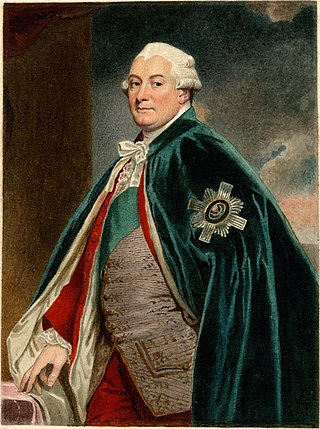
David Murray, 2nd Earl of Mansfield, 7th Viscount of Stormont,, known as the (7th) Viscount of Stormont from 1748 to 1793, was a British politician. He succeeded to both the Mansfield and Stormont lines of the Murray family, inheriting two titles and two fortunes.

Edward Cecil Guinness, 1st Earl of Iveagh, was an Anglo-Irish businessman and philanthropist. A member of the prominent Guinness family, he was the head of the family's eponymous brewing business, making him the richest man in Ireland. A prominent philanthropist, he is best remembered for his provision of affordable housing in London and Dublin through charitable trusts.

Osterley Park and House is a Georgian country estate in west London, that straddles the London boroughs of Ealing and Hounslow. Originally dating from the 1570s, the estate contains a number of Grade I and II listed buildings, with the park listed as Grade II*. The main house was remodelled by Robert Adam between 1761 and 1765. The National Trust took charge of Osterley in 1991 and the house and park are open to visitors.

Marble Hill House is a Neo-Palladian villa, now Grade I listed, in Twickenham in the London Borough of Richmond upon Thames. It was built between 1724 and 1729 as the home of Henrietta Howard, Countess of Suffolk, who lived there until her death. The compact design soon became famous and furnished a standard model for the Georgian English villa and for plantation houses in the American colonies.
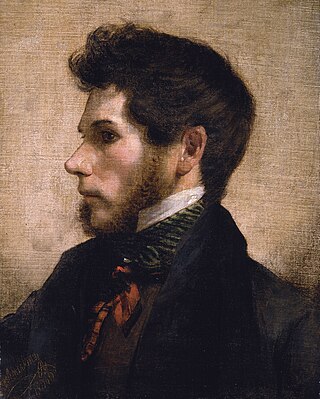
Friedrich von Amerling was an Austro-Hungarian portrait painter in the court of Franz Josef. He was born in Vienna and was court painter between 1835 and 1880. With Ferdinand Georg Waldmüller, he is one of the outstanding Austrian portrait painters of the 19th century.
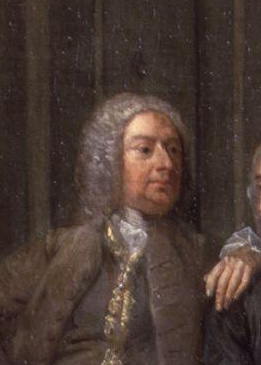
John Wootton was an English painter of sporting subjects, battle scenes and landscapes, and illustrator.

The Spaniards Inn is a historic pub on Spaniards Road between Hampstead and Highgate in London, England. It lies on the edge of Hampstead Heath near Kenwood House. It is a Grade II listed building, dating back to the 16th century.

Dido Elizabeth Belle was a free black British gentlewoman. She was born into slavery and illegitimate; her mother, Maria Belle, was an enslaved Black woman in the British West Indies. Her father was Sir John Lindsay, a British career naval officer who was stationed there; later knighted and promoted to admiral. Lindsay took Belle with him when he returned to England in 1765, entrusting her upbringing to his uncle William Murray, 1st Earl of Mansfield, and his wife Elizabeth Murray, Countess of Mansfield. The Murrays educated Belle, bringing her up as a free gentlewoman at their Kenwood House, together with another great-niece, Lady Elizabeth Murray, whose mother had died. Lady Elizabeth and Belle were second cousins. Belle lived there for 30 years. In his will of 1793, Lord Mansfield provided an outright sum and an annuity to her.

Lady Elizabeth Mary Finch-Hatton was a British aristocrat and the subject of a notable painting, once thought to be by Johann Zoffany, now attributed to David Martin.

The Iveagh Gardens is a public park located between Clonmel Street and Upper Hatch Street, near the National Concert Hall in Dublin, Ireland. It is a national, as opposed to a municipal park, and designated as a National Historic Property. The gardens are almost completely surrounded by buildings making them less noticeable and a little hard to find, unlike other green spaces in Dublin.

Belle is a 2013 British period drama film directed by Amma Asante, written by Misan Sagay and produced by Damian Jones. It stars Gugu Mbatha-Raw, Tom Wilkinson, Miranda Richardson, Penelope Wilton, Sam Reid, Matthew Goode, Emily Watson, Sarah Gadon, Tom Felton, and James Norton.
Thomas Agnew & Sons is a fine arts dealer in London that began as a print and publishing partnership between Thomas Agnew and Vittore Zanetti in Manchester in 1817. Agnew ended the partnership by taking full control of the company in 1835. The firm opened its London gallery in 1860, where it soon established itself as a leading art dealership in Mayfair. Since then, Agnew's has held a pre-eminent position in the world of Old Master paintings. It also had a major role in the massive growth of a market for contemporary British art in the late 19th century. Agnew's closed in 2013. The brand name was sold privately and the gallery is now run by Lord Anthony Crichton-Stuart, a former head of Christie's Old Master paintings department, New York.
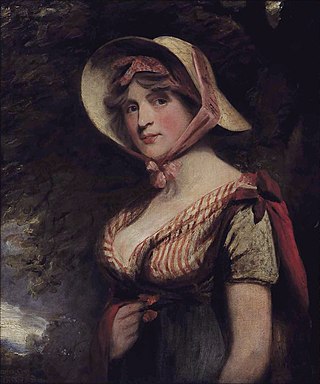
Louisa Manners Tollemache, 7th Countess of Dysart was a peer in the Scottish peerage in a flourishing family. Her father held considerable estates in England largely due to the two marriages of Elizabeth Maitland, Duchess of Lauderdale, earlier Tollemache, née Elizabeth Murray. Her elder brothers left no surviving issue on their deaths which enabled her to enjoy and help to pass on to her descendants the key family settlement properties: Helmingham Hall and Ham House in England.

Two Girls Dressing a Kitten by Candlelight is a "fancy painting" by Joseph Wright of Derby (1734–1797). The painting is displayed at the Kenwood House Public Museum, located in the London Hampstead area.

Portrait of Mrs Mary Graham or The Honourable Mrs Graham is a 1777 oil on canvas painting by the British artist Thomas Gainsborough, produced shortly after Mary's marriage to Thomas Graham, the future Lord Lynedoch on 26 December 1774. It was one of the first works to enter the collection of the Scottish National Gallery in Edinburgh after its bequest in 1859 by the heirs of Thomas Graham.
